The Rover studies Barnacle Bill.
Click on image for full size
Image from: NASA/JPL
Barnacle Bill
Barnacle Bill was the first rock to be explored by the Rover. It was found north by northwest of the Mars Pathfinder lander.
Barnacle Bill was a dark rock. Scientists think that may mean it is a basalt or a special kind of basalt called an andesite. It had many small holes over its surface (vesicles) but otherwise did not appear to be well eroded. These features help scientists figure out the possible origin of Barnacle Bill. Barnacle Bill may have been put in place by flowing water. Rocky outcroppings 30 km away also seem to be made of basalt or andesite. On the other hand, Barnacle Bill might be left over from the formation of the nearby crater called "Big Crater".
You might also be interested in:
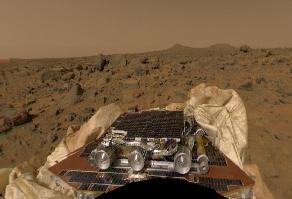
The goal of the Mars Pathfinder (MPF) mission was to analyze the rocks and soil of Mars. The MPF was actually 2 parts, a lander and a rover. The lander stayed right where it landed while the rover named
...more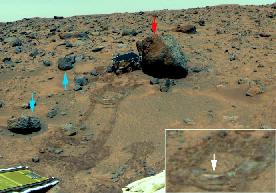
Even though the rocks seem to be much the same, scientists can see three basic differences in these rocks. These differences help them figure out more about weathering processes on Mars and where the soils
...more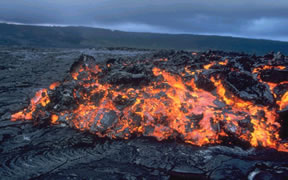
Basalt is an extrusive igneous rock that is very dark in color. It is the most common type of rock in the Earth's crust and it makes up most of the ocean floor. It is made of many dark colored minerals
...more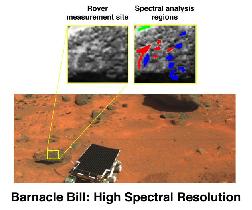
The rocks explored by the Mars Pathfinder's Rover are classified into two groups according to how they eroded. Rocks put in place as a result of an impact which forms a crater are usually much less eroded
...more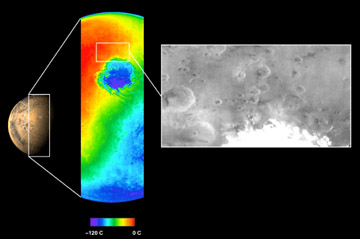
The Mars Odyssey was launched April 7, 2001, from Florida. After a six-month, 285 million-mile journey, the Odyssey arrived at Mars on October 24, 2001. The Odyssey is in its aerobraking phase right now.
...more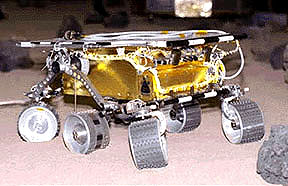
The Mars 2005 mission is still in the planning stages. It is set to launch in the year 2005.
...more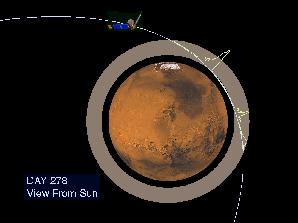
The Mars Global Surveyor reached Mars in September of 1997. But it didn't make it into its final mapping orbit until February 1999. What took so long? Surveyor needed to reach a near-circular, low-altitude
...more















